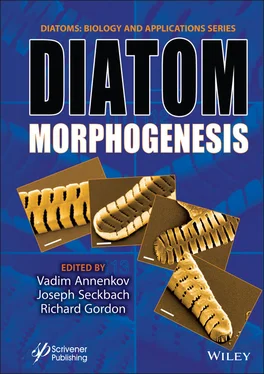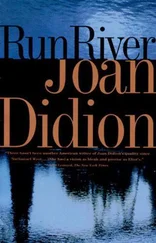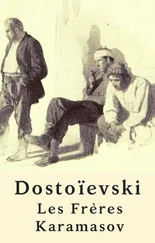Diatom Morphogenesis
Здесь есть возможность читать онлайн «Diatom Morphogenesis» — ознакомительный отрывок электронной книги совершенно бесплатно, а после прочтения отрывка купить полную версию. В некоторых случаях можно слушать аудио, скачать через торрент в формате fb2 и присутствует краткое содержание. Жанр: unrecognised, на английском языке. Описание произведения, (предисловие) а так же отзывы посетителей доступны на портале библиотеки ЛибКат.
- Название:Diatom Morphogenesis
- Автор:
- Жанр:
- Год:неизвестен
- ISBN:нет данных
- Рейтинг книги:5 / 5. Голосов: 1
-
Избранное:Добавить в избранное
- Отзывы:
-
Ваша оценка:
- 100
- 1
- 2
- 3
- 4
- 5
Diatom Morphogenesis: краткое содержание, описание и аннотация
Предлагаем к чтению аннотацию, описание, краткое содержание или предисловие (зависит от того, что написал сам автор книги «Diatom Morphogenesis»). Если вы не нашли необходимую информацию о книге — напишите в комментариях, мы постараемся отыскать её.
A unique book presenting the range of silica structures formed by diatoms, theories and hypotheses of how they are made, and applications to nanotechnology by use or imitation of diatom morphogenesis.
Audience
Diatom Morphogenesis — читать онлайн ознакомительный отрывок
Ниже представлен текст книги, разбитый по страницам. Система сохранения места последней прочитанной страницы, позволяет с удобством читать онлайн бесплатно книгу «Diatom Morphogenesis», без необходимости каждый раз заново искать на чём Вы остановились. Поставьте закладку, и сможете в любой момент перейти на страницу, на которой закончили чтение.
Интервал:
Закладка:
Body shape is important in symmetry determination of organisms. Shape deformation relies on a point-based approach with regard to object recognition requiring identifiable equivalences on multiple shapes. The shape decomposition approach represents an implicit reference to contours in recognition as the conduit to assessing symmetry [2.127] (Figures 2.2a–c). Shape decomposition relies on the delamination of surface boundary height via contours with respect to object recognition and implicitly influences shape in symmetry assessment [2.72] (Figures 2.2d–f).
For reflective (also called bilateral, mirror, mirror-image, line, plane, or left/right) symmetry [2.159], shape is considered to be the most ubiquitous among organisms and is especially noticeable in animals and plants. Colored symmetry [2.132] can also occur, as in the left/right asymmetry of otherwise bilaterally symmetric organisms [2.41, 2.144]. However, symmetry is present as more than rotational or reflective in organisms (Figure 2.3). In 2D, dihedral (rotational plus reflective) [Weisstein 2002], translational, and glide (reflective plus translational) [2.159] symmetries are evident. The 2D and 3D quality of whole organisms or their parts lends itself to the related symmetries of knots (including chirality) [2.154], helices/spirals (including handedness) [2.159], and compound or multiple spirals (a variant of knot symmetry), [2.159] as well as scale (fractal or dilation) [2.159] and related conformal symmetry [2.159] with associated Mobius transformations [2.159]. Symmetries associated with loop networks [2.36, 2.88, 2.89, 2.159, 2.164] are present at various scales in organisms as well. See Figure 2.3 for examples of all symmetries on the diatom valve surface. Note that 1) rotational and reflective symmetries apply to the whole valve; 2) dihedral, translational, and glide symmetries apply to pores on the valve face; 3) knot, helical, compound spiral, and conformal symmetries apply to valve central areas; 4) scale symmetry applies to the replication of five-fold symmetry within a Triceratium valve face; 5) loop networks are seen in the pores on the valve surface of the Trigonium and Triceratium valves depicted.

Figure 2.1A drawing composed by JLP that is reminiscent of one of Mezzanotte’s scenes [2.15]. Although the scene is the whole perceived object, individual objects diatom (fish, jelly fish, boat, oars, waves, and shore) and their attributes such as shape, transparency, location, size, and texture and perspective of the scene may be viewed as perception violations.

Figure 2.2Shape perception of Arachnoidiscus ehrenbergii from image ProvBay5_12lx450. (a-c) Shape deformation via an increasing number of points defining valve features. (d-f) Shape decomposition via an increasing number of contours defining valve features.
Symmetry has implications for evolutionary processes in animals and plants [2.54]. Symmetry may be adaptive so that active organisms or those in rapidly flowing water [2.45] will have reflective symmetry while sedentary organisms in low flow shear regimes will have rotational or dihedral symmetry. Organisms with large surface to volume ratios or repetitive parts tend to have translational symmetry (Figure 2.4). Organisms that exhibit energy efficiency have scale symmetry [2.158]. In general, symmetry is a dynamical property of organisms.

Figure 2.3Diatom valve face symmetries. (a) Arachnoidiscus ehrenbergii-rotational; (b) Biddulphia sp.-reflective; (c) Coscinodiscus sp. microstructure-translational; (d) Asterolampra marylandica-dihedral; (e) Coscinodiscus sp. microstructure-glide; (f) Trigonium americanum-helical/spiral central area; (g) abnormal Cyclotella meneghiniana-multiple helices/spirals central area; (h) Coscinodiscus sp.-helical/spiral; (i) Actinoptychus splendens-knot (interlooping valve structure); (j) Arachnoidiscus ornatus-knot (interlocking rings under valve ribs); (k) Triceratium pentacrinus fo. quadrata-scale; (l) initial valve of Biddulphia sp. 3D valve surface-conformal symmetry or Mobius transformation; (m) Trigonium dubium-loop network; (n) Triceratium bicorne-loop network. (All SEMs by Mary Ann Tiffany). See “Recognition and symmetry” section in the text.

Figure 2.4Double translational symmetry at two scales exhibited in a Paralia sulcata chain colony of repetitive cells. Light micrograph by Mary Ann Tiffany.
2.1.2 Symmetry and Growth
Morphogenesis has been characterized as a system of detached movement of ensembles of cells in animals in contrast to lack of detached movement via ensembles of cells in plants. That is, locomotion is one way to associate a specific kind of symmetry to motile organisms in contrast to sessile organisms which may exhibit another kind of symmetry [2.59]. Modes of growth contribute to the recognition of specific types of symmetry. Branching growth exhibits continuous symmetry decrease and increase in size during growth [2.47]. Stepwise growth and size reduction are modes of discrete growth where size increases or decreases over time. Growth changes are concomitant with symmetry changes as potential indicators of stress associated with development, morphogenesis, cytogenesis, epigenesis [2.154], and embryogenesis [2.43, 2.149], depending on evolutionary or ecological conditions. Levels of environmental or teratological stress are said to influence fitness and adaptability of an organism, although this connection has not been quantitatively or definitively formalized [2.53, 2.54, 2.35, 2.68].
Developmental instability has been associated with fluctuating asymmetry which is generally considered as small random deviations from perfect reflective (bilateral) symmetry [2.7, 2.53, 2.60, 2.87, 2.94, 2.128, 2.152]. Instability is presumed to be associated with either side of an organism and developmental processes, and genetics or environmental conditions may influence the size of the fluctuations in asymmetry [2.53]. No explicit or quantitative relation has been given connecting fluctuating asymmetry with instability as a measure of stress. Assessment using fluctuating asymmetry characterizations have been made on a population (species) level and has not been carried out with individuals or at interspecific or higher taxonomic levels [2.53, 2.54].
2.1.3 Diatom Pattern Formation, Growth, and Symmetry
Diatoms are unicellular microalgae that are known for their exquisitely ornamented hydrated silica frustule (cell wall) with geometric intricacies. At a molecular level, ornamentation on the valve surface emanates from silicic acid precipitation [2.47] and interaction with proteins in the silica deposition vesicle (SDV) and silica deposition through the SDV membrane (known as the silicalemma) [2.50, 2.142]. Valve surface patterning occurs as a diversity of geometric structures [2.98]: the multitude of species-specific forms with various symmetries. Anatomically, a diatom frustule is composed of two close-fitting thecae (valves) subtended by cingulae (girdle bands) [2.119, 2.150, 2.151]. During reproduction, the cell undergoes expansion as two daughter cells are created, with each daughter half-cell acquiring each half of the mother cell and one half (valve) of the frustule [2.119]. Each new valve is constructed within an SDV within each daughter cell. Because one valve fits inside the other (like petri dishes) and each daughter cell builds its new valve within the perimeter of the valve it inherited, one daughter cell is usually smaller in size than the mother cell (but cf. [2.117]), and the size diminution process continues until a developmental limit is reached according to the MacDonald-Pfitzer rule [2.90, 2.111, 2.112], which may correlate with a minimal organelle content [2.97]. At this point, size is restored via sexual reproduction and auxosporulation and from this, an initial cell is produced which in turn produces the vegetative cell [2.119].
Читать дальшеИнтервал:
Закладка:
Похожие книги на «Diatom Morphogenesis»
Представляем Вашему вниманию похожие книги на «Diatom Morphogenesis» списком для выбора. Мы отобрали схожую по названию и смыслу литературу в надежде предоставить читателям больше вариантов отыскать новые, интересные, ещё непрочитанные произведения.
Обсуждение, отзывы о книге «Diatom Morphogenesis» и просто собственные мнения читателей. Оставьте ваши комментарии, напишите, что Вы думаете о произведении, его смысле или главных героях. Укажите что конкретно понравилось, а что нет, и почему Вы так считаете.












